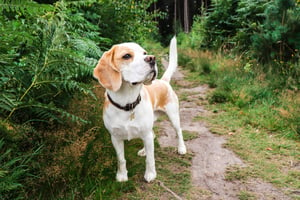Training a Cocker Spaniel can be a rewarding experience for both you and your pet. This guide will...
Boykin Spaniel Training: Everything You Need to Know
Are you looking for information about Boykin Spaniel training? You’ve come to the right place! This article provides an overview of Boykin Spaniel training, including tips and tricks for owners. We’ll discuss the basics of Boykin Spaniel training, including what to expect and how to get started. We’ll also provide some helpful resources to ensure you have all the information you need to train your Boykin Spaniel successfully.
What is a Boykin Spaniel?
A Boykin Spaniel is a small breed of dog, originally bred in South Carolina. They are an active, intelligent, and loyal breed, and they make excellent family pets. Boykin Spaniels are great for hunting, and they have a natural instinct for the water. They are also a great choice for obedience or agility competitions.
Boykin Spaniels are a medium-sized breed, with males standing 16-18 inches tall and weighing between 30 and 40 pounds. Females are slightly smaller, standing 14-16 inches tall and weighing between 25 and 35 pounds. They have a short, silky coat that can be bay, brown, or black in color. Their expressive eyes and floppy ears give them a look of eagerness.
What to Expect from Boykin Spaniel Training
Boykin Spaniel training should be a positive experience for both you and your pup. Training should start as soon as your pup is old enough, and the best way to start is with basic commands. Start by teaching your pup the basic commands like “sit,” “stay,” and “come.” Once your pup has mastered the basics, you can move on to more advanced commands like “heel” and “down.”
You should also begin socialization training with your pup as soon as possible. This will help your pup become comfortable with other people and animals, and it will make them more confident and outgoing. Socialization should include exposing your pup to different people, animals, and environments.
It’s important to remember that Boykin Spaniels are highly intelligent and eager to please. This means they will learn quickly with positive reinforcement. Whenever your pup does something correctly, make sure to reward them with treats and praise. This will help them learn faster and stay motivated.
Tips for Successful Boykin Spaniel Training
When it comes to successful Boykin Spaniel training, consistency is key. You should stick to a consistent training schedule and use the same commands and techniques every time. This will help your pup learn faster and stay focused.
It’s also important to keep training sessions short and fun. Your pup will get bored easily, so make sure to keep them engaged. Use treats and toys to reward them for good behavior, and switch up the activities to keep them from getting bored.
Finally, make sure to be patient with your pup. Training can take time, so don’t expect them to learn everything overnight. If you stay consistent and reward them for good behavior, your pup will eventually learn all the commands.
Helpful Resources for Boykin Spaniel Training
To ensure you have all the information you need to train your Boykin Spaniel successfully, here are some helpful resources:
- The Boykin Spaniel Society: This is the official website of the Boykin Spaniel Society, which provides information about the breed, health, and training. They also offer a variety of educational materials, such as books and videos.
- Boykin Spaniel Training Guide: This is a comprehensive guide to training your Boykin Spaniel. It includes step-by-step instructions and tips to help you get started.
- Boykin Spaniel Training Blog: This is a blog devoted to Boykin Spaniel training. It includes articles, tips, and advice from experienced Boykin Spaniel owners.
Conclusion
Boykin Spaniel training can be a rewarding experience for both you and your pup. With the right resources and tips, you can ensure your pup learns all the commands and becomes a well-behaved, obedient dog. Remember to be consistent and patient, and reward your pup for good behavior. With these tips, you’ll be able to train your Boykin Spaniel successfully.



